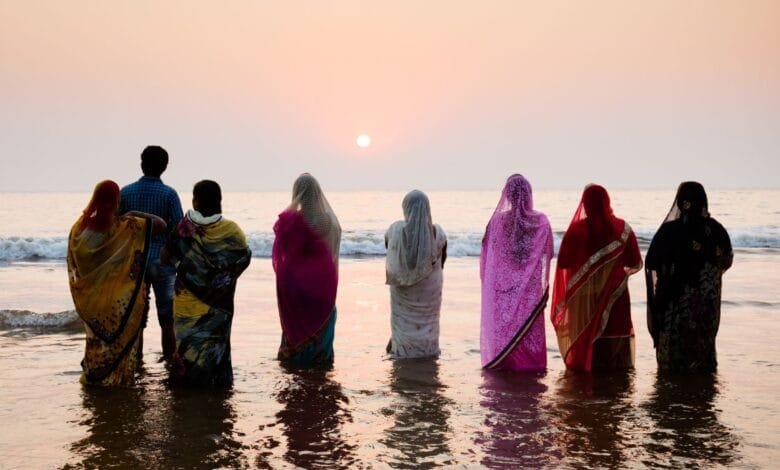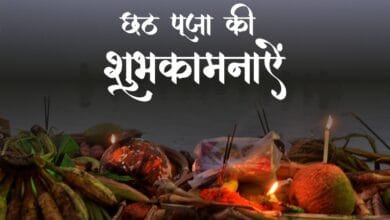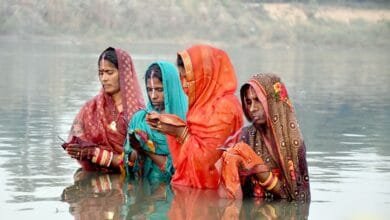Chhath Puja Rules and Rituals 2025: A Complete Guide to the Sacred Sun Festival

Chhath Puja, one of the most ancient and revered Hindu festivals, is a beautiful testament to the sun god’s life-giving energy. Celebrated primarily in Bihar, Jharkhand, Uttar Pradesh, and parts of Nepal, this four-day festival involves rigorous rituals, unwavering devotion, and strict observances. As we approach Chhath Puja 2025, let’s explore the sacred rules and rituals that make this festival truly unique.
When is Chhath Puja in 2025?
Chhath Puja follows the lunar calendar and is celebrated on the sixth day of the Hindu month of Kartik. In 2025, the festival will be observed from October 28 to October 31, with the main rituals taking place over four days.
The Four Days of Chhath Puja
Day 1: Nahay Khay (October 28, 2025)
The festival begins with ritual purification. Devotees take a holy dip in rivers, preferably the Ganges, and bring home the sacred water to prepare prasad.
Rules and Rituals:
- Take a bath in a river or clean water source before sunrise
- Clean the house thoroughly
- Prepare sattvic (pure vegetarian) food
- The prasad typically includes kaddu-bhaat (bottle gourd and rice)
- Only one meal is consumed during the day
- Maintain complete purity and cleanliness
Day 2: Kharna (October 29, 2025)
This is the day of fasting without water from sunrise to sunset.
Rules and Rituals:
- Devotees fast throughout the day without consuming even a drop of water
- Break the fast after sunset by offering prasad to the moon
- Traditional prasad includes kheer (rice pudding made with jaggery), chapati, and bananas
- Family members share the prasad
- After this meal, the 36-hour waterless fast begins
Day 3: Sandhya Arghya (October 30, 2025)
The most visually stunning day when devotees offer prayers to the setting sun.
Rules and Rituals:
- Continue the waterless fast that began the previous night
- Prepare the offering basket (daura) with seasonal fruits, thekua, rice laddoos, and coconuts
- Gather at riverbanks or water bodies during evening
- Stand in waist-deep water facing the setting sun
- Offer arghya (water offerings) to the setting sun with folded hands
- Sing traditional Chhath songs and folk melodies
- The fast continues through the night
Day 4: Usha Arghya (October 31, 2025)
The final day concludes with offerings to the rising sun.
Rules and Rituals:
- Arrive at the riverbank before sunrise
- Stand in water facing east
- Offer arghya to the rising sun
- Pray for family welfare and prosperity
- Break the fast after the sunrise offerings by consuming ginger and water
- Distribute prasad among family and community members
Essential Rules to Follow During Chhath Puja
Purity and Cleanliness
- Maintain strict physical and mental purity throughout the festival
- Wear clean, preferably new clothes
- Women typically wear traditional sarees without stitching (like dhoti style)
- Men wear dhoti and kurta
- Avoid leather items and shoes during rituals
- Sleep on the floor or a mat during the festival days
Dietary Restrictions
- Food must be prepared without onion, garlic, and salt during certain rituals
- Use only rock salt (sendha namak) when required
- No non-vegetarian food from Nahay Khay until the fast is broken
- Avoid alcohol and tobacco completely
- Food should be prepared in pure ghee, not oil
- Use new or thoroughly cleaned utensils for prasad preparation
Behavioral Guidelines
- Maintain celibacy during the festival period
- Avoid cutting nails or hair during these four days
- Speak truth and avoid harsh words
- Practice patience and devotion
- Do not sleep during the day on Kharna
- Maintain a peaceful and positive mindset
Traditional Prasad Items
Thekua: The quintessential Chhath prasad made from wheat flour, jaggery, and ghee, deep-fried until golden brown.
Kheer: Sweet rice pudding made with jaggery, rice, and milk, prepared on Kharna day.
Fruits: Seasonal offerings including bananas, coconuts, sugarcane, sweet lime, apples, and water chestnuts (singhara).
Rice Laddoos: Sweet balls made from rice flour and jaggery.
The Science Behind Chhath Puja
This ancient festival has deep scientific roots. Offering prayers during sunrise and sunset allows devotees to absorb vitamin D and beneficial solar energy. The waterless fast detoxifies the body, and standing in water during the rituals provides natural hydrotherapy. The festival falls during a seasonal transition, and these practices help boost immunity for the approaching winter.
Modern Adaptations While Maintaining Tradition
In 2025, many urban areas have created artificial ghats for devotees who don’t have access to rivers. However, the core rituals remain unchanged:
- Maintain the same level of devotion regardless of location
- Use clean, flowing water if possible
- Set up makeshift water bodies in community spaces
- Follow all purity rules even in urban settings
Who Can Observe Chhath Puja?
While primarily observed by married women seeking blessings for their families, Chhath Puja can be performed by anyone regardless of gender or marital status. Men, unmarried women, and children can all participate. However, once someone begins observing Chhath, they should continue it annually for life or pass the responsibility to another family member.
Important Reminders
- Pregnant women and people with serious health conditions should consult elders before undertaking the rigorous fast
- Children below 12 are usually not required to fast completely
- The spirit of devotion matters more than physical endurance
- Community support and collective celebration strengthen the festival’s essence
Conclusion
Chhath Puja 2025 offers us another opportunity to connect with ancient traditions that honor nature’s most fundamental force—the sun. The rigorous rules and rituals aren’t merely religious obligations but pathways to spiritual discipline, gratitude, and community bonding. Whether you’re observing Chhath for the first time or continuing a family tradition, approaching it with devotion, purity, and respect will make your celebration truly meaningful.
May the sun god bless all devotees with health, prosperity, and happiness. Chhathi Maiya ki jai!
Are you planning to observe Chhath Puja this year? What aspect of this beautiful festival resonates most with you? Share your experiences and family traditions in the comments below.
Discover more from Sanatan Roots
Subscribe to get the latest posts sent to your email.




2 Comments